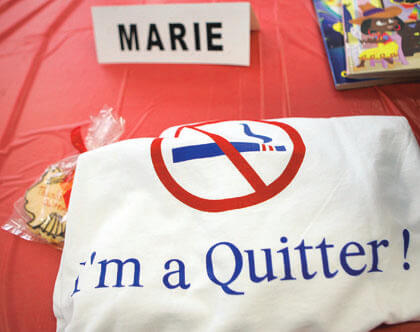By Philip Newman
Deaths in the city have fallen to yet another all−time low, including the lowest infant mortality rate on record, although Queens provided some less positive health trends.
Dr. Thomas Frieden, the city Health Department commissioner, announced that since 2001 life expectancy in the city has grown by a year and three months.
Females born in 2006 have a life expectancy of 81.7 years, up five months from 2005. Males gained 2.5 months during the same period, reaching an average life expectancy of 75.9 years.
Frieden attributed the gains to declines in smoking−related diseases, murders, HIV deaths, auto accidents and infant mortality.
The annual report, “Summary of Statistics: The Conquest of Pestilence in New York City,” is replete with exhaustive information on the state of death and life in the five boroughs.
The Health Department reported that citywide deaths for 2007, the most recent year for which statistics are available, declined from 55,391 in 2006 to 54,073 in 2007. In 2001, the death total was 60,218.
In 2007, Queens had 12,097 deaths, down from 12,989 in 2006. Brooklyn had 1,577 deaths in 2007, followed by 9,652 in Manhattan, 8,691 in the Bronx and 3,094 in Staten Island.
The leading causes of death in the city were heart disease followed by cancer, influenzaâ„pneumonia, cerebrovascular diseases, diabetes, chronic lower respiratory diseases, HIV disease, accidents except poisoning by psychoactive substances and hypertension.
“There were decreases in most leading causes of premature death in 2007,” the Health Department reported.
“The largest declines were due to a 15 percent drop in homicide, use of poisoning by psychoactive substances with a 14 percent decline; diabetes mellitus, down 9.5 percent; HIV deaths, down 8.6 percent; cerebrovascular disease, down 6 percent; and accidents except poisoning by psychoactive substances, down 5.7 percent.
“Deaths caused by smoking declined by 12.7 percent over the past five years,” the Health Department reported.
The report said that in 2008 motor vehicle deaths fell to the lowest point since 1915 with 300 recorded in the city.
“Cancer, on the other hand, increased by 3.5 percent, heart disease was up 0.6 of 1 percent and suicide up by 1.8 percent,” the report said.
Although Queens improved in a number of categories, the borough led the city in deaths from influenza and pneumonia, emphysema, gall bladder diseases, accidental falls, suicide, mesothelioma, bladder cancer, cancer of uncertain or unknown behavior, anemia, diseases of the nervous system, rheumatic heart disease and complications from medical and surgical care.
In many other categories, Brooklyn fared worse, in some cases because the borough has 236,000 more residents than Queens.
Reported by community districts, Flushing led Queens in heart disease deaths with 748, followed by the Rockaways with 562 and Jamaica−St.Albans with 533, Astoria−Long Island City with 498, Rego Park−Forest Hills with 519, and Ridgewood−Glendale with 479.
Flushing had a borough−high number of cancer deaths with 393, followed by Jamaica−St.Albans with 283.
HIV deaths declined in Queens to 106, far below the HIV death count in Brooklyn (335), the Bronx (336), Manhattan (254) and Staten Island (30).
The Health Department said that of the 90,870 abortions in the city, Queens had 17,478, Brooklyn 29,008, the Bronx 20,208, Manhattan 12,730 and Staten Island 2,898.
Citywide, the leading cause of deaths of males age 15 to 24 was homicide.
Nearly 44 percent of city births were to unmarried women, including 70 percent in the Bronx, 44.4 percent in Queens, 42.8 in Brooklyn, 35.1 percent in Manhattan and 33.3 percent in Staten Island.
Queens communities with the highest percentages of births to foreign−born women included Elmhurst at 89.6 percent, Jackson Heights at 85.2 percent, Flushing at 82.4 percent, Sunnysideâ„Woodside at 81.8 percent, Rego Parkâ„Forest Hills at 72.1 percent, Woodhaven at 71.5 percent, Fresh Meadows−Briarwood at 69.7 percent and Howard Beach at 67 percent.
Long Island Jewish Medical Center delivered the most babies in Queens with 5,504, but it was in third place after Maimonides Medical Center in Brooklyn (7,226) and Mount Sinai in Manhattan (5,930).
June has long been the month for June brides, but it was August when the most couples wed — 7,062 to be exact.
The Health Department reported that Isabella, Sophia and Daniel have replaced Ashley and Michael in the top spot among favorite baby names.
“Michael had reigned uncontested since 1956, when he surpassed Robert as the boy name of choice,” a Health Department official said. ”Jayden is now second best among boys’ names.”
Among unusual 2007 names for girls are Unique and Miracle; for boys, Achilles, Phoenix and Orion.
Reach contributing writer Philip Newman by e−mail at news@timesledger.com or phone at 718−229−0300, Ext. 136.



































